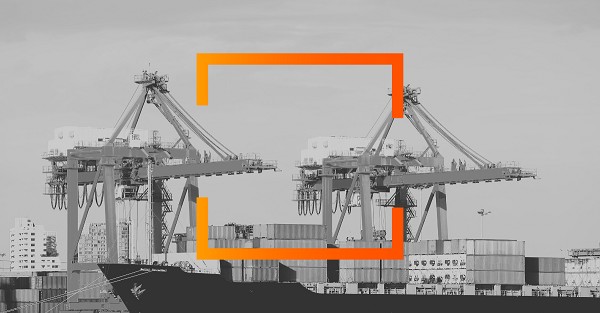A National Security Threat Hidden in Plain Sight?
Large ship-to-shore cranes that unload containers are a staple at every port in the U.S. and around the world. But, what if they are moving more than goods from sea to land? What if, in fact, the cranes pose a serious national – indeed, global – security threat so consequential that it could threaten the integrity of the entire supply chain?
This is what the U.S. government is trying to find out. Ongoing investigations are all centered around one single corporate actor: ZPMC.
Short for Shanghai Zhenhua Heavy Industries Company Limited, ZPMC is a Chinese state-owned manufacturing and engineering firm. It was founded in 1992 and quickly grew to become the largest S2S crane manufacturer in the world. Currently, 80 percent of all ship-to-shore cranes in the United States (75 percent of all S2S cranes in the world) are made by ZPMC.
To say they have cornered the crane market is an understatement, but the immediate concern is less about their financial monopoly and more about whether ZPMC has covertly introduced intelligence-gathering technology into the S2S cranes, infiltrating American ports with foreign spyware and exposing them – and the entire supply chain – to serious security risks.
There have been more than a few concerning discoveries about ZPMC’s cranes in recent years. In 2021, the FBI found suspicious modems that could be accessed remotely on a ship (also owned by ZPMC) that was transporting ZPMC cranes into the port of Baltimore. This prompted a wider investigation that found multiple instances of modems and communications equipment on and around ZPMC’s cranes.
No one could figure out definitively why the modems had been installed or exactly what they were being used for, but concerns over vulnerable port security have persisted. The House Homeland Security Committee is currently probing the Chinese-built S2S cranes, and a report with their findings is expected to be released soon.
Concerns over the S2S cranes have put pressure on the government to take action. The Biden administration recently announced plans to invest $20 Billion in U.S.-manufactured port infrastructure, including cranes, and in February an executive order granted the U.S. Coast Guard greater power to implement cybersecurity checks at ports.
A large-scale transition away from a single manufacturer that dominates such a sprawling, critical industry isn’t quick or easy. In the meantime, we’re left to contemplate the worst case scenarios, from illegal intelligence gathering to disruptions in equipment and supply chain movement. If ZPMC’s S2S cranes are ultimately found to present a Trojan Horse-like threat to port security, the uneasy relationship that already exists between the U.S. and China likely won’t make it a simple problem to solve.
Listen to the full podcast episode here: Playing the “China Card” in U.S. Ports
About Art of Supply
Every business story has a supply chain angle, whether that means the movement of goods around the world, extended corporate ecosystems, or the relationships between companies.
Each week, the Art of Supply podcast draws inspiration from news headlines to provide honest and insightful coverage of today’s complex global supply chains.
Other recent episodes include:
Net Zero in New York? JBS Accused of Greenwashing - We all want big companies to be good corporate citizens, but the road to zero emissions is not a well-worn path. JBS, the largest meat processing company in the world, currently faces a legal challenge from the state of New York over their plan to reduce emissions, but is it really about misleading consumers or is it an attempt to stop them from being listed on the NYSE?
What You Don’t Know Can Hertz You - Hertz was, well, ‘hurt’ by the pandemic more than their competitors. After declaring bankruptcy and preparing to IPO they needed good news. But their large commitment to EVs may have been more of a detriment than an advantage, leading to a new CEO - the fifth in four years.

